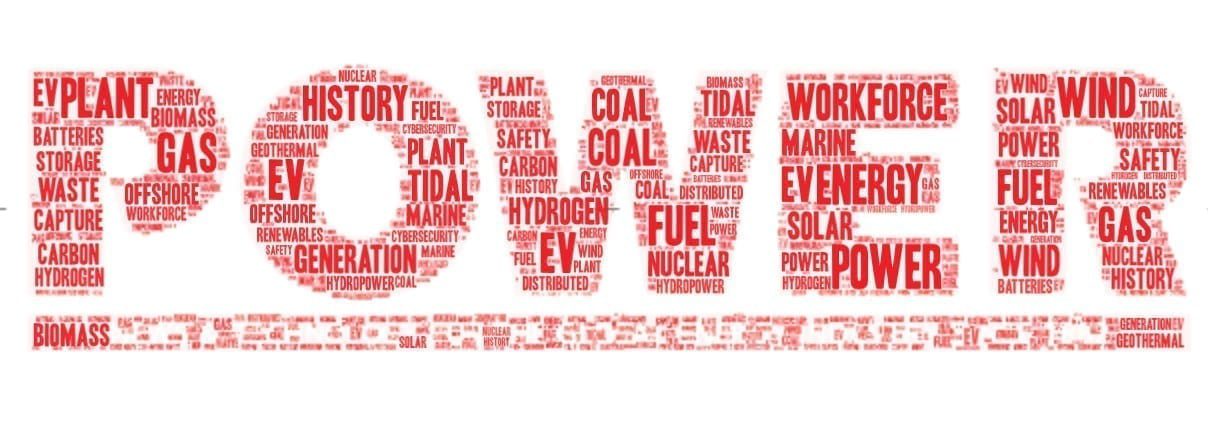POWER Digest [January 2023]
Credit to Author: Sonal Patel| Date: Tue, 03 Jan 2023 05:10:52 +0000

POWER’s editors curate important policy, technology, business, and industry news briefs from around the world in this department.
Brazil Formally Restarts Construction of Angra 3 Nuclear Reactor
Eletronuclear, a mixed-ownership subsidiary of Brazilian state-run power group Eletrobras, has resumed construction of Angra 3, a 1.4-GW Siemens/KWU. While construction of the reactor was formally initiated in 1984, the project has suffered a series of interruptions, most recently in 2015. Eletronuclear moved to resume construction in February when it signed a contract with the Agis consortium, which includes Brazilian firms Ferreira Guedes, Matricial, and ADtranz. Eletronuclear placed first concrete on Nov. 11 as part of the Angra 3 Critical Line Acceleration Plan. The company’s plans currently anticipate completion of the project by November 2026. When completed Angra 3 will generate 12 million MWh per year, “enough energy to supply residential consumption in the entire North region and almost the entire Midwest region of Brazil,” the company noted. “The generation of Angra 1, 2 and 3 together will be equivalent to 60% of the energy consumption in the state of Rio de Janeiro and 3% in the country.”
Turkey Inaugurates 558-MW Hydropower Project
Turkey on Nov. 25 inaugurated the Yusufeli Dam and an associated 558 MW hydroelectric project on the Çoruh River near Yusufeli in Artvin Province, within the eastern Black Sea region. The project, owned by Turkey’s State Hydraulic Works, reportedly cost $1.8 billion. The project comprises a 275-meter-tall double-curvature concrete arch dam and a power plant equipped with three 186-MW vertical-axis Francis turbine units. Construction began in 2013.
Kansai Electric Will Seek Life Extension of Takahama Nuclear Reactors
Japanese utility Kansai Electric Power Co. will seek regulatory approval to extend the lives of its Takahama No. 3 and 4 nuclear reactors in Fukui Prefecture to 60 years. The company said on Nov. 25 that a special inspection showed no expected issues if the units’ lives were extended by 20 years. The company, however, said that it plans to replace the steam generators at Takahama 3 and 4 during outages in 2026 and 2027. Japan’s Prime Minister Fumio Kishida in July called for up to nine nuclear plants to be put into operation to mitigate tight supplies expected this winter. In August, the prime minister said his country’s government would also look at extending the life of existing reactors to ensure energy security and meet environmental goals. The country has since moved swiftly to develop a plan to allow facilities to extend operational lifetimes. The efforts mark a shift in policy following the 2011 Fukushima nuclear disaster, when Japan introduced strict safety standards limiting nuclear reactors’ operation to 40 years. A 20-year extension may be allowed if approved by regulators, but so far, only four of Japan’s 33 reactors available for commercial operation have approval to operate up to 60 years.
Botswana Selects Preferred Bidder for 300-MW Coal Plant
Botswana’s Ministry of Energy has selected Indian steel company Jindal Steel & Power (JSPL) as the preferred bidder to build a 300-MW coal-fired power plant near Mmaphashalala, between its capital Gaborone and Francistown and south of the Serorome River. JNSP will reportedly design, finance, construct, own, operate, and maintain the Mmamabula coal-fired power plant. JSPL was one of three bidders for the greenfield plant. Botswana, a southern African country that holds more than 200 billion tons of coal resources, has been seeking to reap value from its coal resources to support its economy. The country currently relies on two coal power plants near Palapye, about 200 kilometers north of Gaborone, to produce part of its peak demand of about 610 MW. The country imported all its power from South African utility Eskom until 1985, when it built the 132-MW Morupule coal-fired power plant. After South Africa’s debilitating energy crisis in 2008, Botswana’s government opted to build a second coal plant, the 600-MW Morupule B station. The Mmamabula project was originally proposed in 2012 as a 1.2-GW coal-fired plant.
Cost Pressures Undermine Spanish Renewables Auction
Spain’s 2022 renewables auction, held on Nov. 22, resulted in allocations of only 46 MW of new wind capacity and zero solar capacity—a fraction of the 3.3 GW that was up for tender. Renewables groups, which lamented the “very disappointing” results, blamed increasing cost pressures and design flaws in the country’s fourth auction. “The main reason was the auction failed to take into account the increased costs of new wind energy projects,” said WindEurope. “Also the Spanish ran this auction with a ‘secret’ price cap,” it said. “The wind farm developers had to guess what the cap was. At the same time they also had to reflect the current inflation, supply chain bottlenecks and high raw material and shipping costs in their bids. We still don’t know what the secret cap was. We assume from the results that it was around €47/MWh [$48.81/MWh],” the group added. “Most wind energy developers bid above this level. Which is not surprising—€47 doesn’t cover current costs.” While underwhelming, the auction results may serve as a warning signal to other European Governments “that have not yet reflected the reality of higher costs in their national auctions,” WindEurope warned. “Just recently the German wind energy association warned that the current ceiling price in Germany could lead to similarly low auction results.” Spain has a target of 40 GW of wind energy by 2025 and 50 GW by 2030, figures which will require 2.5 GW of new wind each year up to 2030. Capacity not awarded in the auction round will be added to the 2023 auction.
—Sonal Patel is a POWER senior associate editor (@sonalcpatel, @POWERmagazine).
The post POWER Digest [January 2023] appeared first on POWER Magazine.